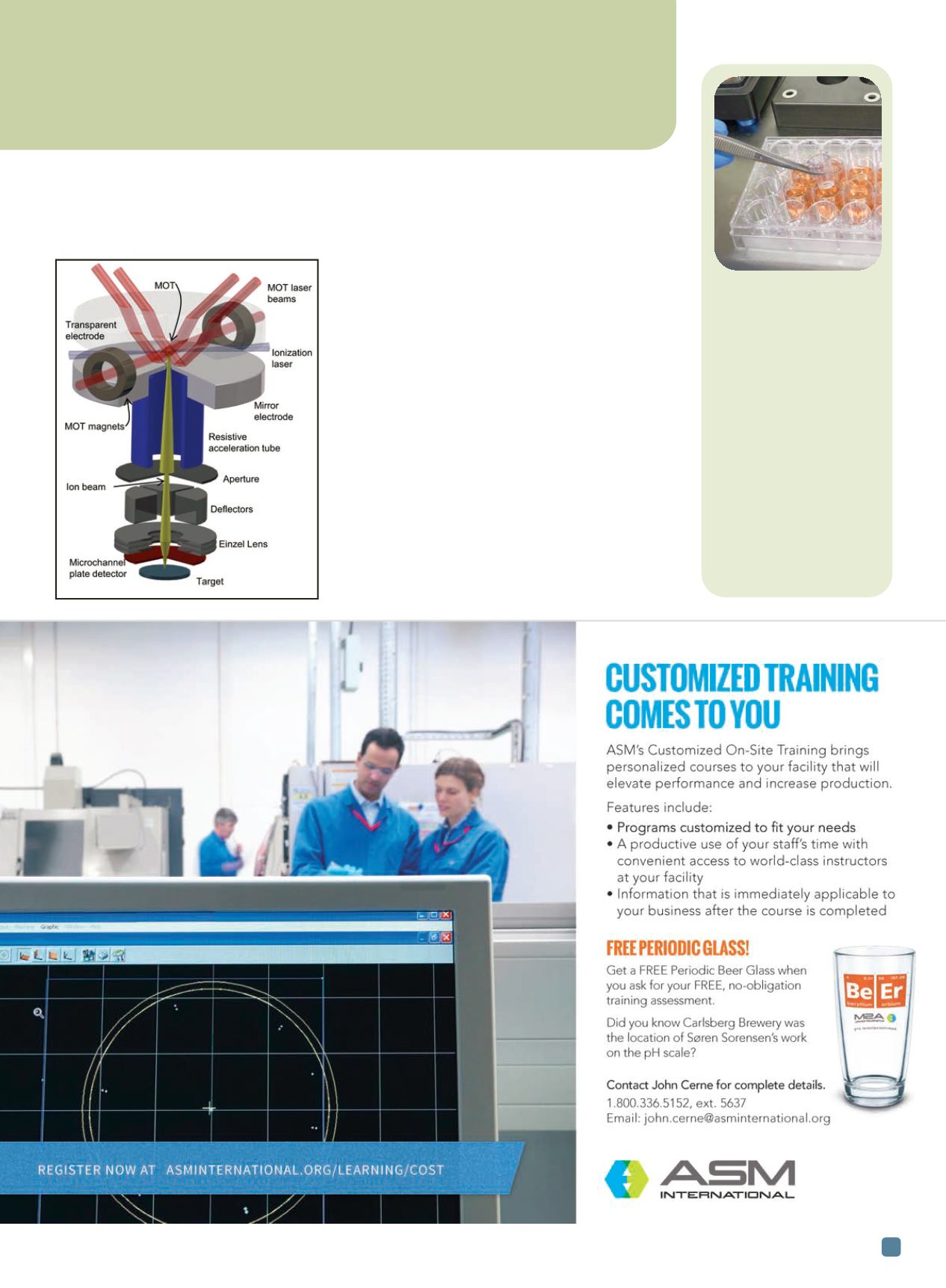

ADVANCED MATERIALS & PROCESSES •
JULY 2014
9
Newmicroscope sees what others miss
Researchers at the National Institute of Standards and Technology (NIST), Gaithersburg, Md.,
built the first low-energy focused ion beam (FIB) microscope that uses a lithium ion source. The
team’s new approach opens up the possibility of creat-
ing a whole category of FIBs using any one of up to 20
different elements, greatly increasing the options for
imaging, sculpting, or characterizing materials.
Although the new microscope’s resolution is not as
good as a scanning electron microscope (SEM) or he-
lium ion microscope, it can image nonconductive ma-
terials and can more clearly visualize the chemical
composition on the surface of a sample than the higher-
energy SEMs and FIBs. Further, by analyzing the energy
with which the ions scatter, researchers have shown that
the microscope should be able to not only see that adja-
cent materials are chemically different, but also identify
the elements that make them up.
nist.gov.
The NIST focused lithium ion beammicroscope traps and cools
a gas of lithium atoms to a fewmillionths of a degree above
absolute zero (MOT section). Another laser ionizes the atoms
and then electric fields accelerate them, straightening out their
flight and focusing them on a target. Courtesy of NIST.
Instron,
Norwood, Mass., part-
nered with Professor El Haj,
director of the Institute of Sci-
ence and Technology in Medi-
cine at Keele University, UK, to
study regenerative medicine.
As this field becomes more es-
tablished, it is critical to inves-
tigate and understand the
relationship between cells and
their mechanical environment.
El Haj is working with an inter-
disciplinary group to pursue
translational research for re-
generative medicine, and Instron
will provide the instrumentation
needed to study the in vivo envi-
ronment on the benchtop.
instron.com.


















